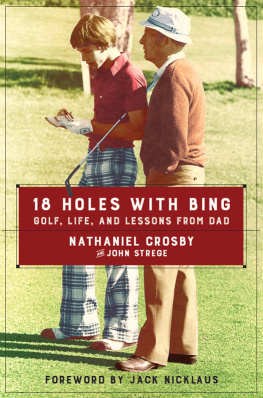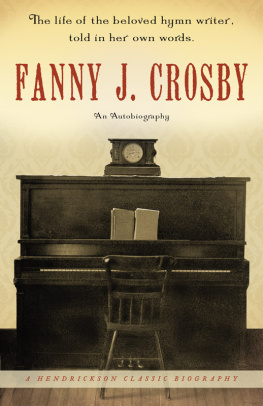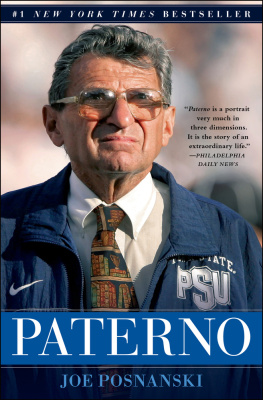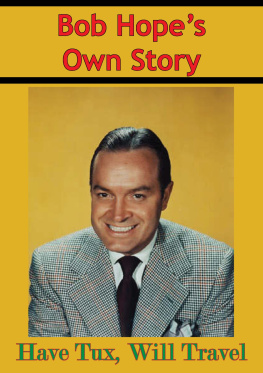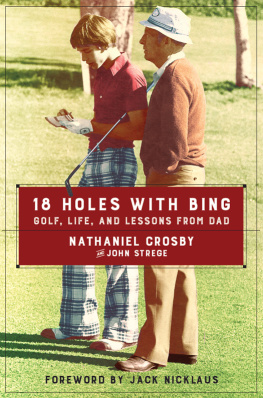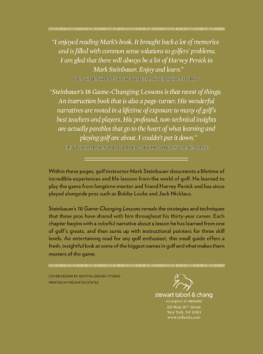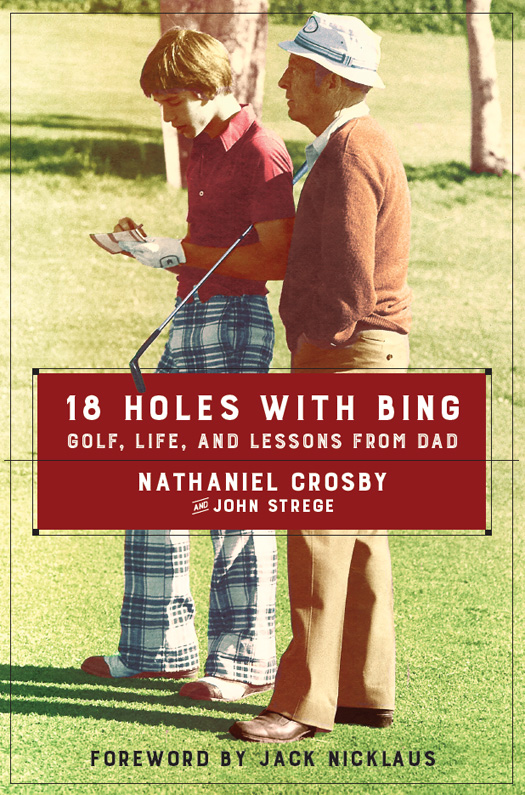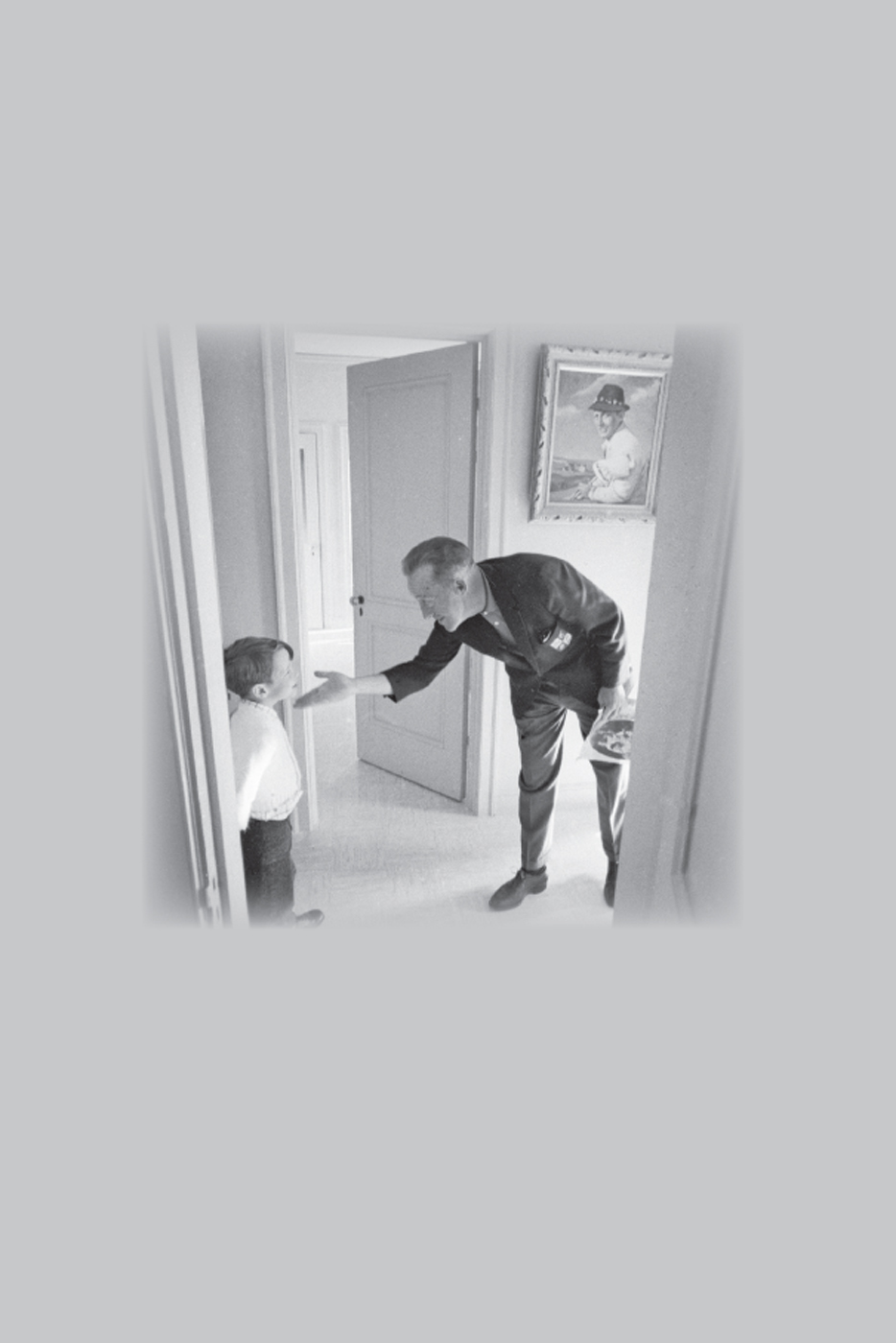One year in the 1960s, I was playing in the Bing Crosby National Pro-Am, and it was my birthday, January 21st. I had several people in my room at the Lodge at Pebble Beach, and we were watching tournament play conclude on the eighteenth hole when the phone rang. My good friend John Swanson was calling to wish me a happy birthday. Then John handed the phone to someone who began singing Happy Birthday to me. I could not hear it well above the noise of the crowd in my room and was unable to ascertain who it was. Finally, the man finished the song. I stood there, a bit impatient, and asked somewhat curtly, With whom am I speaking, please?
Oh, Jack, the man on the other end of the line said. Its Bing Crosby. I just wanted to wish you a happy birthday. I guess my voice must have been hoarse.
I felt about two feet tall. The most famous voice in America was serenading me on my birthday, and I was unable to recognize it. It was possibly my most embarrassing moment in golfor outside of golf. Fortunately, Bing never held it against me and certainly not against the PGA Tour.
The PGA Tour is indebted to Bing Crosby, whose contributions to professional golf and golfers in the earlier years is immeasurable, including his establishment of the pro-am format that is a staple of every PGA Tour event and the source of much of its charitable contributions. Everyone in the game viewed the Crosby Pro-Am as one of the premier events on the PGA Tour. Major championships were important in those days, but not to the same degree they are now. The Crosby Clambake was close to a major in many golfers eyes, closer certainly than any other tournament on the PGA Tour.
Bings contributions were not confined to his own tournament, however. He was very kind to me and was always interested in what I was doing and how he might contribute to my own tournament, the Memorial, at Muirfield Village Golf Club in Dublin, Ohio. He came to the tournament, played in the pro-am, and was a great member of our Captains Club, a group of the games statesmen who select the Memorials annual Honoree, provide guidance on player invitations and the conduct of our tournament, and frequently meet to discuss topical issues in todays game.
I was always appreciative when Bob Jones would come out to watch me play at Augusta National in the Masters. Similarly, I appreciated it when Bing would come out to watch me play at Pebble Beach. I was fortunate to have won his tournament on three occasions.
Bing, incidentally, was a very good player in his own right, having played in both the U.S. Amateur and the British Amateur. His son Nathaniel was a fine player, too. Nathaniels U.S. Amateur title at the Olympic Club in 1981 would have been very special for Bing.
One more story: In 1967, the first year that Spyglass Hill was added to the rotation at the Bing Crosby National Pro-Am, Bing proposed a wager. Jack, he said, Im going to bet you five dollars that you cant break par the first time you see Spyglass. I accepted the bet and I shot a two-under-par 70 in a practice round there. I have a nice $5 bill at the Nicklaus Museum, signed by Bing and congratulating me on my 70 at Spyglass.
Bing Crosby was absolutely a great ambassador for our game, and I remember him fondly as a great man and friend as well.
Bing Crosby, or Dad to me, was the most popular entertainer in the world in his day, a day that lasted the better part of five decades. In the last year of his life, he was still selling out shows in London and New York City. Just imagine something five times stronger than the popularity of Elvis Presley and the Beatles put together, Tony Bennett, a legend in his own right, said in 1999. Dads influence spanned generations. According to David Sheffs The Last Interview, the Beatles first hit single, Please, Please Me, was inspired in part by a line in one of Dads songs. I remember the day I wrote it, John Lennon said. I heard Roy Orbison doing Only the Lonely or something. And I was intrigued by the words to a Bing Crosby song that went, Please lend a little ear to my pleas. The double use of the word please. So it was a combination of Roy Orbison and Bing Crosby.
Billboard called Dad the most popular radio star of all time. For five years in a row he was the number-one box office draw, and in 1944 he won an Academy Award as best actor for his portrayal of Father OMalley in Going My Way.
He ranks among the best-selling recording artists in history with more than a half billion of his songs and albums in circulation. His recording of White Christmas is the best-selling single of all time and remains a holiday standard. Late in his career, he delivered another holiday standard, Peace on Earth/Little Drummer Boy, with his unlikely collaborator David Bowie. Generations have been bridged by this voice, which The Times of London once wrote had been heard more often by more people than that of any mortal in history. Between 1927 and 1962 he had 368 charted records. No one else is even close: Frank Sinatra had 209, Elvis Presley 149, and the Beatles 68. In 1960, Dad was presented with a platinum record and honored as First Citizen of the Record Industry, based on having sold 200 million discs.
But theres more. Yank, a weekly military magazine published during World War II, identified him as the individual who had done the most to boost morale during the war, according to U.S. troops polled; President Franklin Roosevelt came in second. In 1947, an Associated Press poll identified him as the most admired man alive, ahead of Jackie Robinson and Pope Paul XII.
And then there was golf. Everything Dad accomplished in the entertainment field was a distant second to this game that animated him more than anything else. As my mother so aptly described many years ago, Bing Crosby was a golfer who sang.
In the battle against par or against your opponent, Dad once told Golf Digest, you cant think about much else, and the result, for me at least, is good therapy. For me, golf has been a kind of passport to relaxation and happiness.
He began the Bing Crosby Pro-Am in 1937; and it still is played today, though under an assumed name, the AT&T Pebble Beach National Pro-Am. The pro-am concept that is a staple of virtually every PGA Tour event today, with proceeds earmarked for charity, was Dads idea.
Yet with his unsurpassed fame and his exalted standing in the history of both entertainment and golf, he was just Dad to me, albeit with unusually large accommodations. When I was four, he moved the family from Beverly Hills to the San Francisco suburb of Hillsborough. Our home on five acres was somewhere in the vicinity of 20,000 square feet, with 25 rooms. We had a butler, two housekeepers, a gardener, and a governess. The artwork included a variety of western pieces: a Remington, two C.M. Russells, three Herman Hansens; a Jean-Baptiste-Camille Corot, and an Alfred Munnings. Moreover, my mother had a large Faberge collection, accumulated via gifts from my father every year of their twenty-year marriage. None of it meant anything to me until I took an art history class in college and realized the historic significance of much of the familys art collection. When asked on a test where the location of a particular famous rendering was, I answered, Upstairs at my house.

